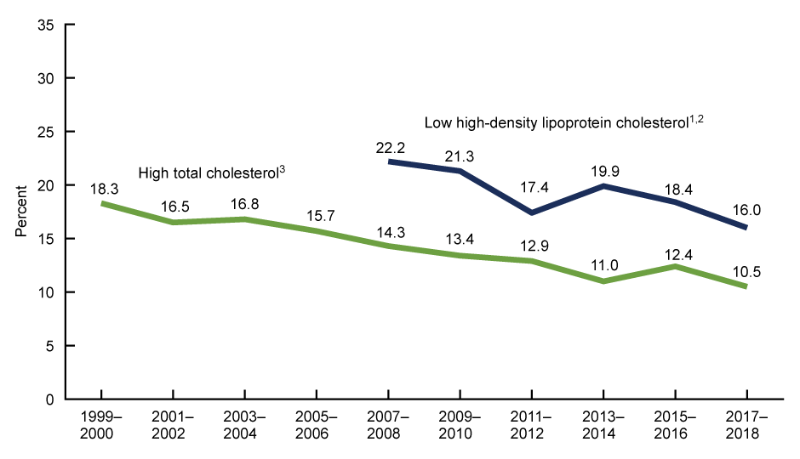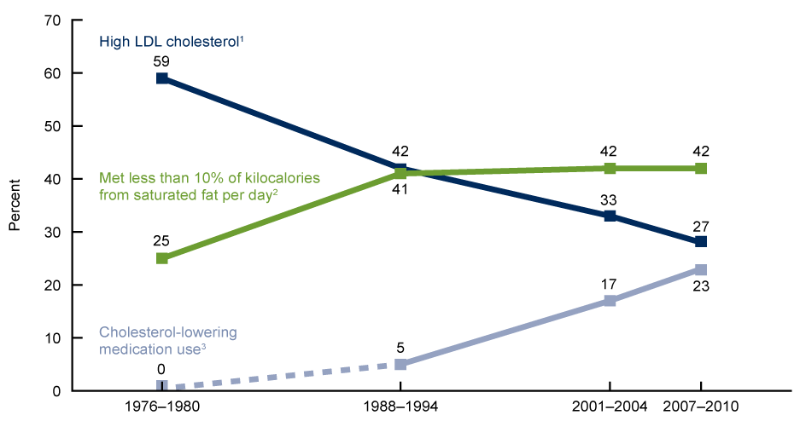Cholesterol Trends
High cholesterol – one of the leading causes of death in the United States – is a major risk factor for strokes and heart disease. You would think that seeing the downward-sloping graphs would, at first, give us a certain sense of relief, thinking we’ve finally found a turnaround point for at least one of the issues within our research scope.

Upon further investigation, however, I've realized that the excitement was short-lived. The following revelation confirms that cholesterol-lowering drugs have been the major contributor to the significant decrease in the prevalence of high cholesterol over the past 25 years*.

As you can see from this graph, the use of cholesterol-lowering medication continued to grow steadily, from 5% to 23%, between 1988-1994 and 2007-2010, respectively. Presently, the trend continues, and we are still heavily relying on the use of statin and non-statin cholesterol-lowering drugs.
* Public Health Impact: High Cholesterol - CDC, Behavioral Risk Factor Surveillance System, 2019- https://www.americashealthrankings.org/explore/annual/measure/High_Chol/state/ALL